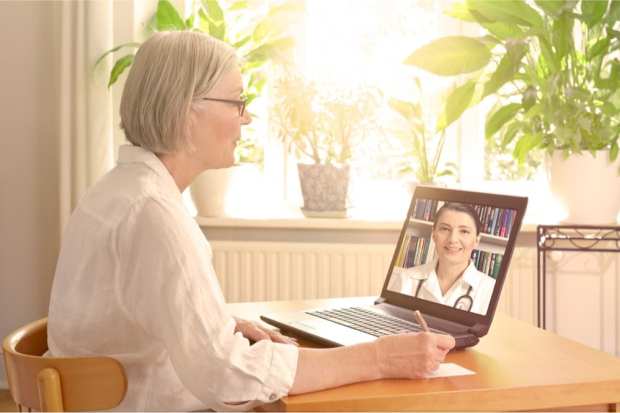Microsoft, Nuance Team On Telehealth Solution

Nuance Communications, through a partnership with Microsoft, is aiming to gather medical patient data through artificial intelligence (AI) to give doctors more time to focus on patient care, according to a press release.
Nuance’s new Dragon Ambient eXperience (DAX) program will be activated via the Microsoft Teams workflows, and the AI “securely captures” the details of a virtual medical visit so that they are immediately available, the release stated.
The idea behind this telehealth solution is to help reduce administrative workflows that could lead to burnout among physicians. The DAX program will work to synthesize conversations between physicians and patients, and also incorporate data from the patient’s electronic health record (EHR), creating a “highly accurate” note for physicians to refer to, the release stated.
The risk of burnout is a valid fear, according to research, with the number of telehealth visits going up due to the pandemic, with an increase of anywhere between 50- to 175-fold in numbers, according to the release. The quick shift to the virtual model, which previously only counted small amounts of patients per year, has made it imperative for technology to keep up with new standards for information exchange.
According to Diana Nole, executive vice president and general manager of healthcare with Nuance, the growth of telehealth “represents a unique opportunity to use Nuance DAX ambient clinical intelligence technology to transform healthcare experiences and define what healthcare providers and consumers should expect from advanced digital health solutions.”
“Our strategic partnership with Microsoft, which led to this rapid integration of Nuance DAX with Microsoft Teams for telehealth, illustrates the ongoing importance of combining our technologies, domain expertise and market reach to develop advanced cloud-based conversational AI solutions that keep the health of clinicians and patients front and center in healthcare delivery,” she said, according to the release.
The rise of telehealth has been praised in recent months as it offers new, more efficient ways to see patients, reducing the risk of viral infections and cutting down on time spent in waiting rooms.
